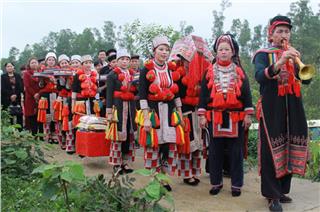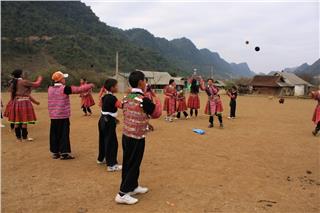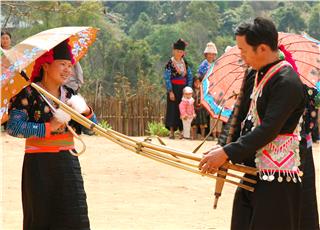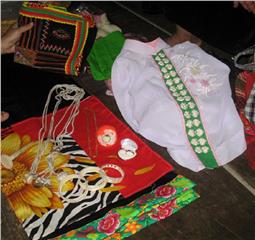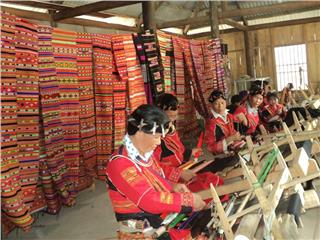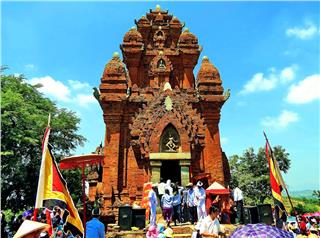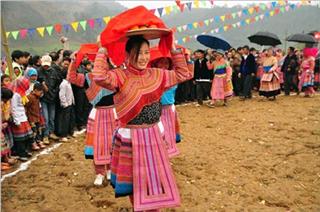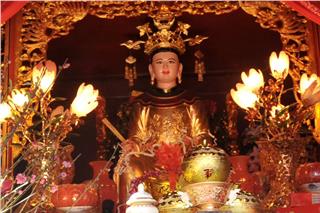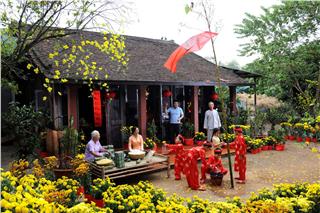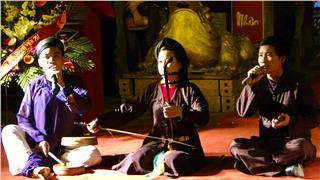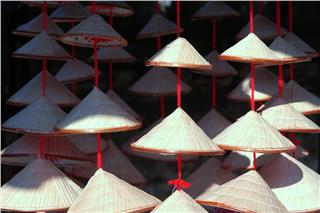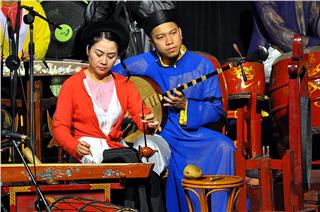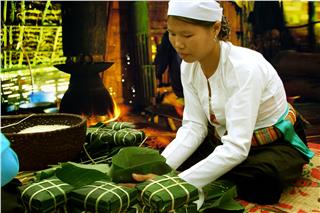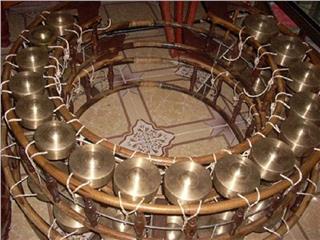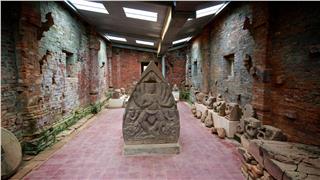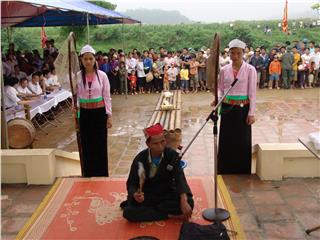Loong Sap where Thai ethnic culture is preserved
Tue, 17 Mar 2015 . Last updated Thu, 25 Jun 2015 09:02
-
 Vietnam – The S-shaped country 10092 viewed
Vietnam – The S-shaped country 10092 viewed -
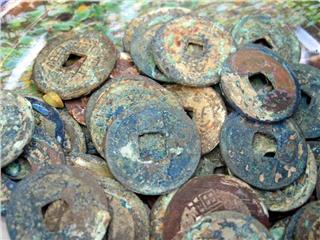 Ancient Vietnamese coins – Episode 1 9425 viewed
Ancient Vietnamese coins – Episode 1 9425 viewed -
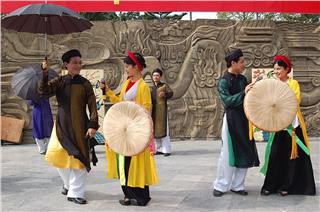 Special cultural features of Quan Ho singing 8586 viewed
Special cultural features of Quan Ho singing 8586 viewed -
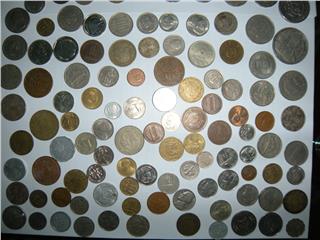 Ancient Vietnamese coins – Episode 2 8399 viewed
Ancient Vietnamese coins – Episode 2 8399 viewed -
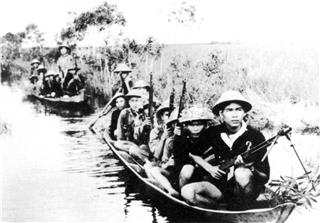 Vietnam History 1858-1945 7168 viewed
Vietnam History 1858-1945 7168 viewed -
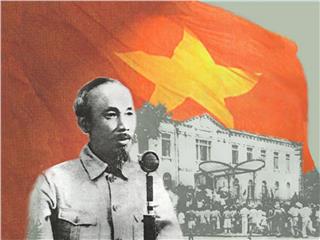 The Vietnamese Proclamation of Independence 6690 viewed
The Vietnamese Proclamation of Independence 6690 viewed -
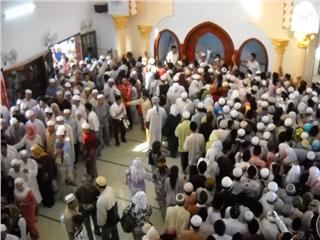 Cham Muslims in An Giang 6123 viewed
Cham Muslims in An Giang 6123 viewed -
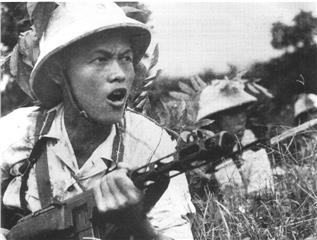 Vietnam history 1945-1954 6002 viewed
Vietnam history 1945-1954 6002 viewed -
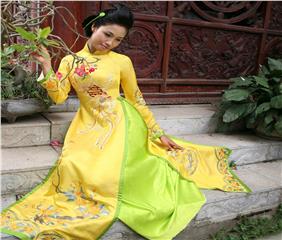 Predestined love tie with Ao Dai - Vietnamese long dress 5706 viewed
Predestined love tie with Ao Dai - Vietnamese long dress 5706 viewed
Traveling to Moc Chau, a border land in Vietnam, visitors will have the chance to admire the poetic scenery with immense fields of white mustard flowers, experience and learn about Thai ethnic culture in Loong Sap.
It is a bit cold in Moc Chau this season. When the weak sunlight starts shining over the Northwestern region, Moc Chau is covered with a splendid coat of white mustard flowers. All the fields here are covered with the white color of mustard flowers. I stroll leisurely in pine-tree forest along small pathways. In front of me is an immense mustard flower bed running from my feet to the hilltop. The white color of mustard flowers and green of pine-trees in such a poetic space totally enchant me.
I arrive at Loong Sap commune located in Vietnam-Laos border where many Thai ethnic people reside. Thai ethnic people in Moc Chau are mainly white Thai ethnic people. This is La Muong hamlet, also called “Ban Moi” which lies along a mountain slope and faces a large stream. I drop in a house at the end of the hamlet.
There is a folk verse that “Xa an theo lua, Thai an theo nuoc”; i.e. Xa people’s life is associated with fire white Thai people’s life is associated with water. Thai ethnic people are famous for their experience in building dams, digging ditches, building water-wheels and making water-spouts for irrigation. This stream stems from Laos and runs through Yen Chau then joins Vat stream to create a flow. The flow is stopped by a limestone mountain, thus creating Dai Yem waterfall, a beauty spot of Moc Chau. This stream is seen as the upper course of Dai Yem waterfall.
This is the bride’s family. She will leave her house tomorrow morning. Today her family receives their relatives and neighbors who come to share happiness with the bride before she leaves her home. The bridegroom’s family also visits the bride’s house in the night before the wedding. After the two families carry out worship rituals and have meals at the bride’s house, the two family start singing love duet songs.
This activity attracts many people, creating a joyful atmosphere. They mainly sing long songs. Even, sometimes they extemporize on the spot. The two families sing and drink wine until tomorrow morning. This is a fine custom that is preserved well by the white Thai ethnic people. Before the bride leaves her home, a special ritual is carried out. The shaman is carrying out a ritual to report to the brownie that this girl is no longer member of this family and she will move to her husband’s house from now on.
The bride is taken to the bridegroom’s house in the early morning. According to the local people, ghosts and devils often wander in the daytime, so if the bride is taken to the bridegroom’s house in the daytime, these ghosts and devils will follow her home to destroy her happiness. Therefore, the early morning is seen as the purest and luckiest time in the day.
The groombride’s family members are carrying the dowries to the vehicle. The dowries include blankets and cushions made by the bride. As a traditional custom, only relatives and matchmakers take the bride to her husband’s house. Her parents just see her off at the gate. Right after she leaves her home, the bride’s family throws rice husks. Rice husks symbolize prosperity and growth.
When the newly-married couple arrives at the bridegroom’s house, they have to present the brownie first. The pair of wine pipes tied with red threads means that the bride has changed her last name. The shaman will ask for acceptance of the bridegroom’s ancestors and the brownie. From now on, the bride officially becomes a married woman and a member of the bridegroom’s family.
After all rituals, everyone gets together in the bridegroom’s house to have a party in congratulation of the newly-married couple. The party is held all day by the bridegroom’s family. Especially, the “xoe” dance is seen as indispensable part of the party. The wedding is not only a happy day of the two families and the whole hamlet, but also aimed at strengthening the community spirit and preserving traditional and cultural features of the ethnic minority.
Source: VTC10 - NETVIET
- Tags:
- Vietnamese culture
- Moc Chau
- Thai people
- Thai ethnic culture
- Loong Sap
- white Thai ethnic people

